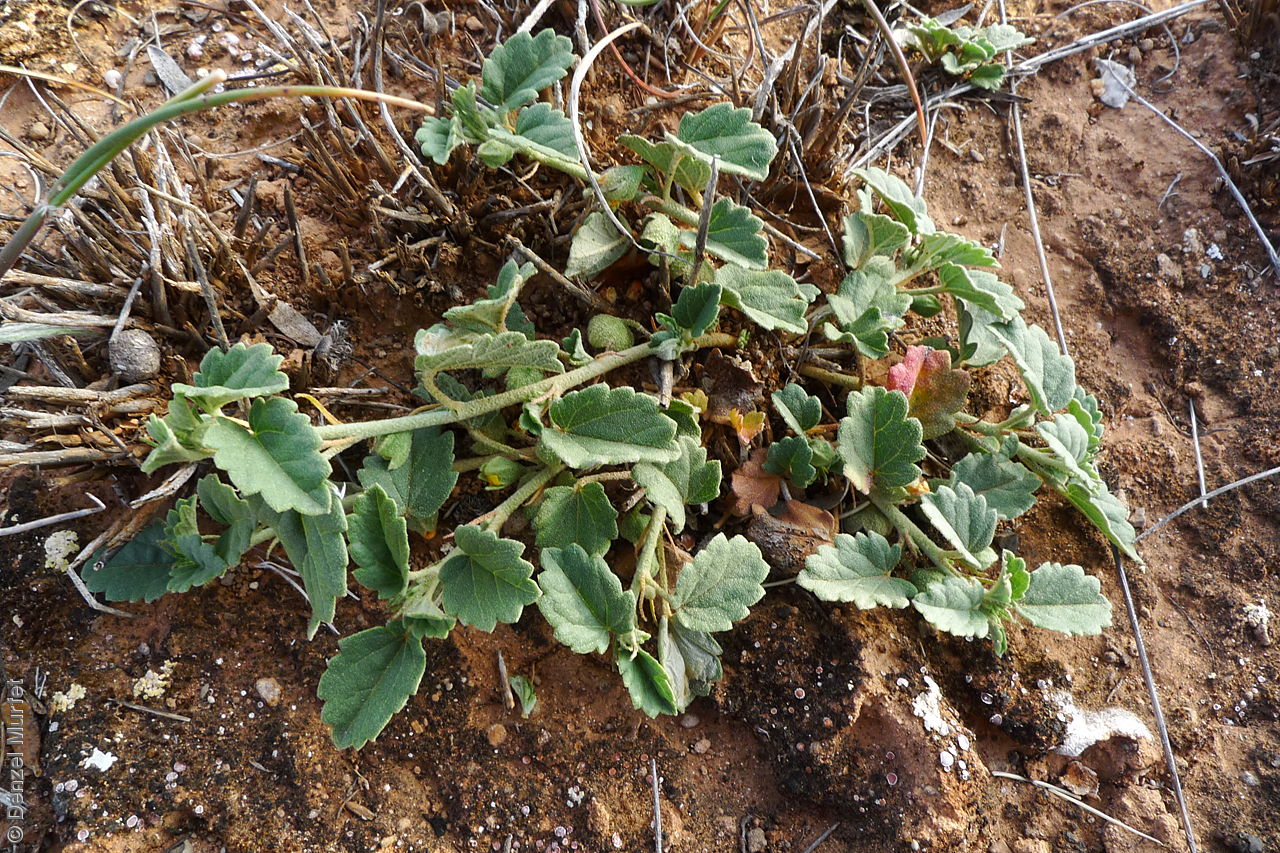
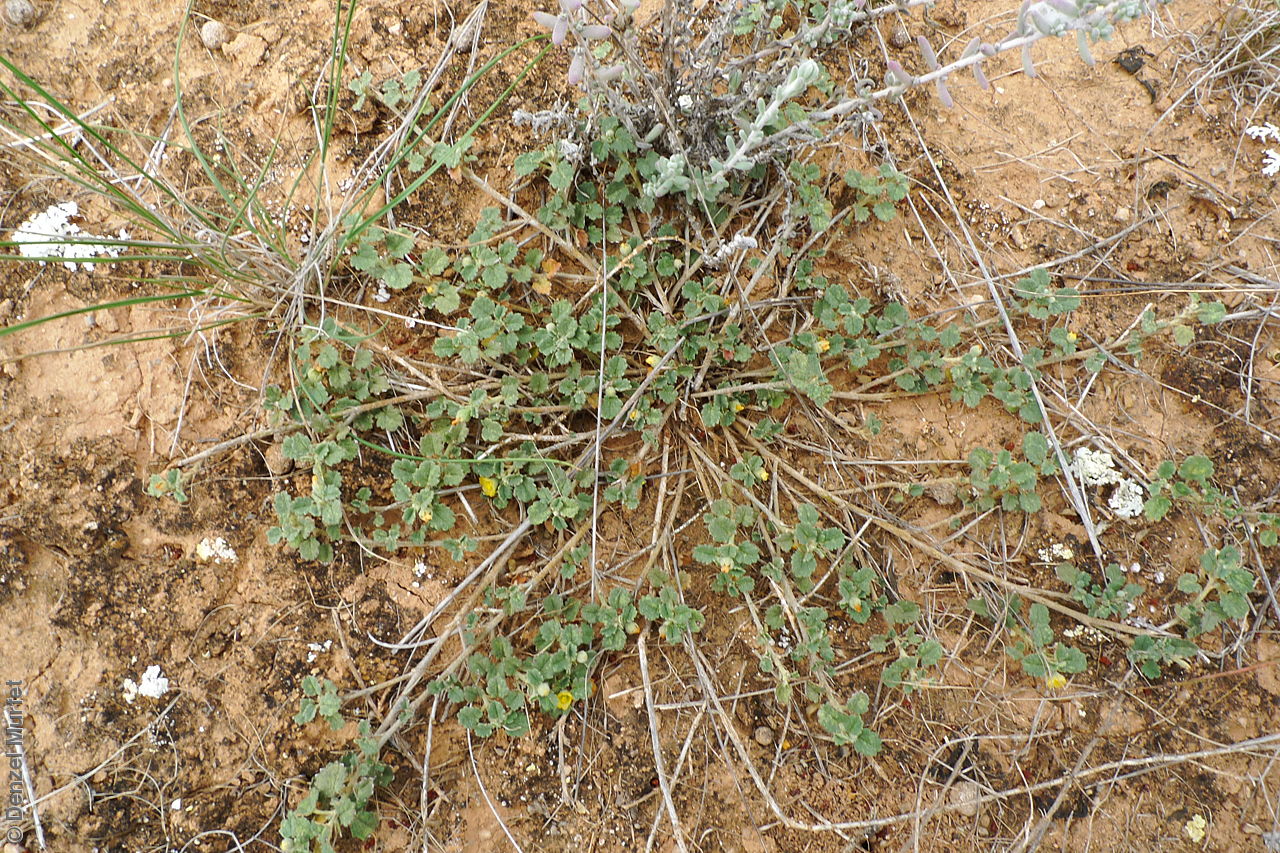
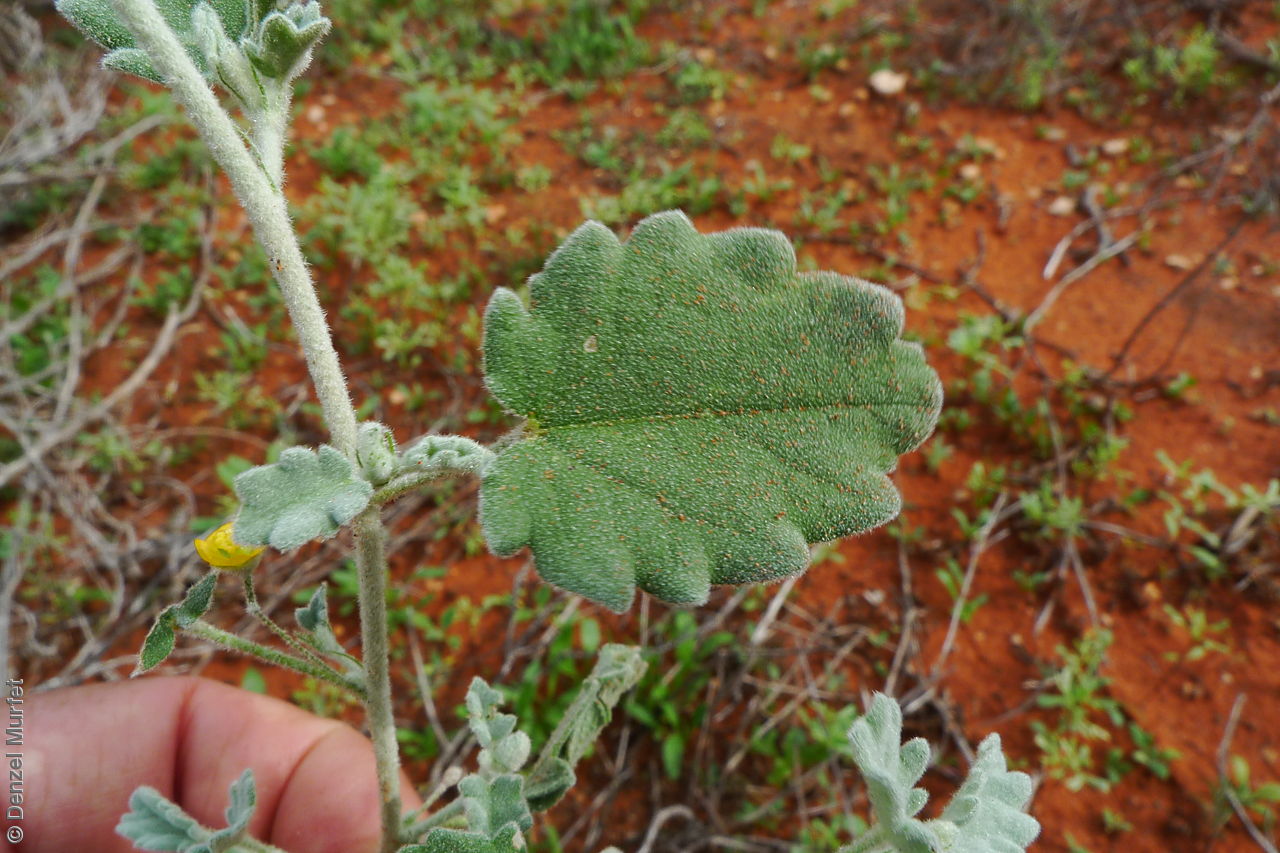
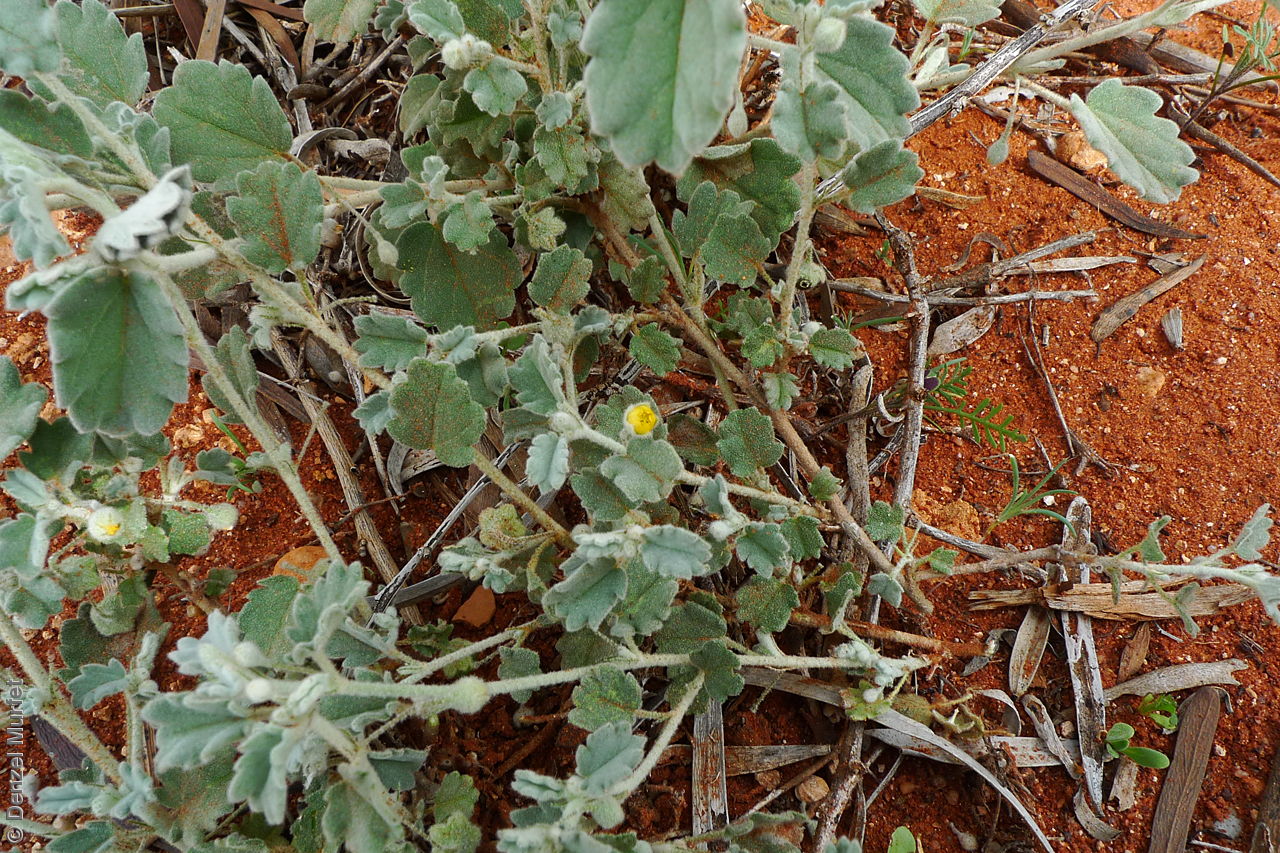
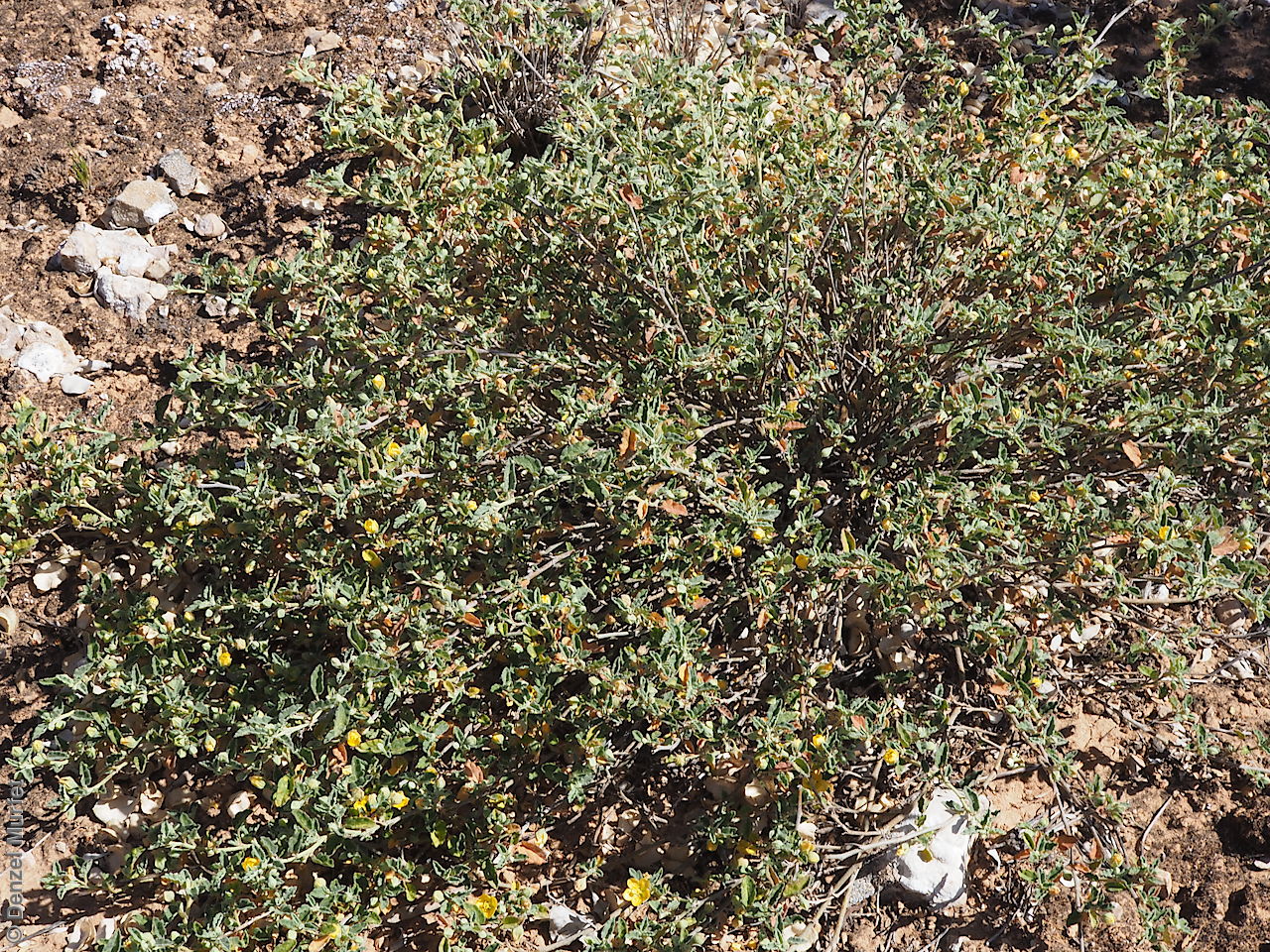
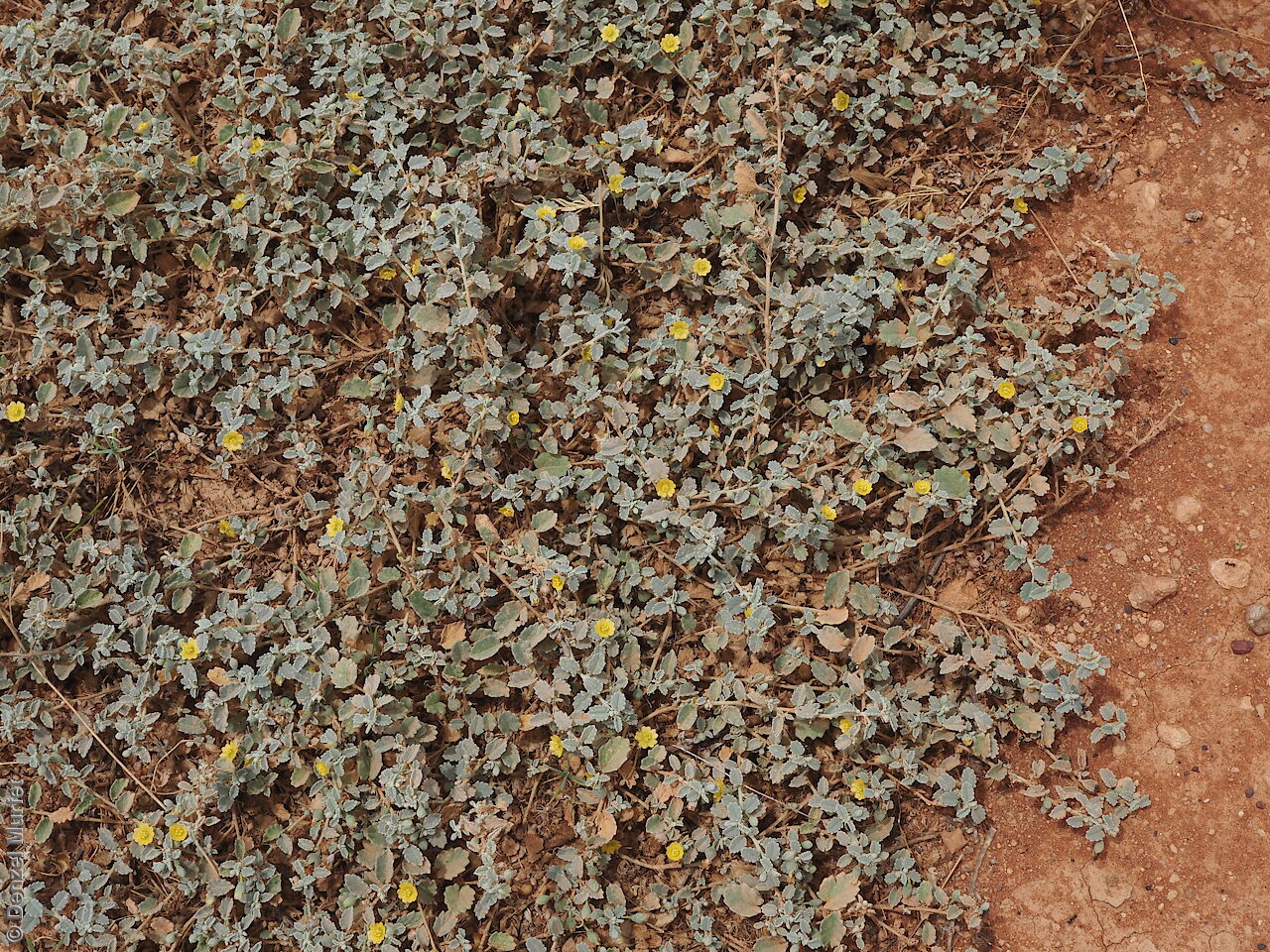
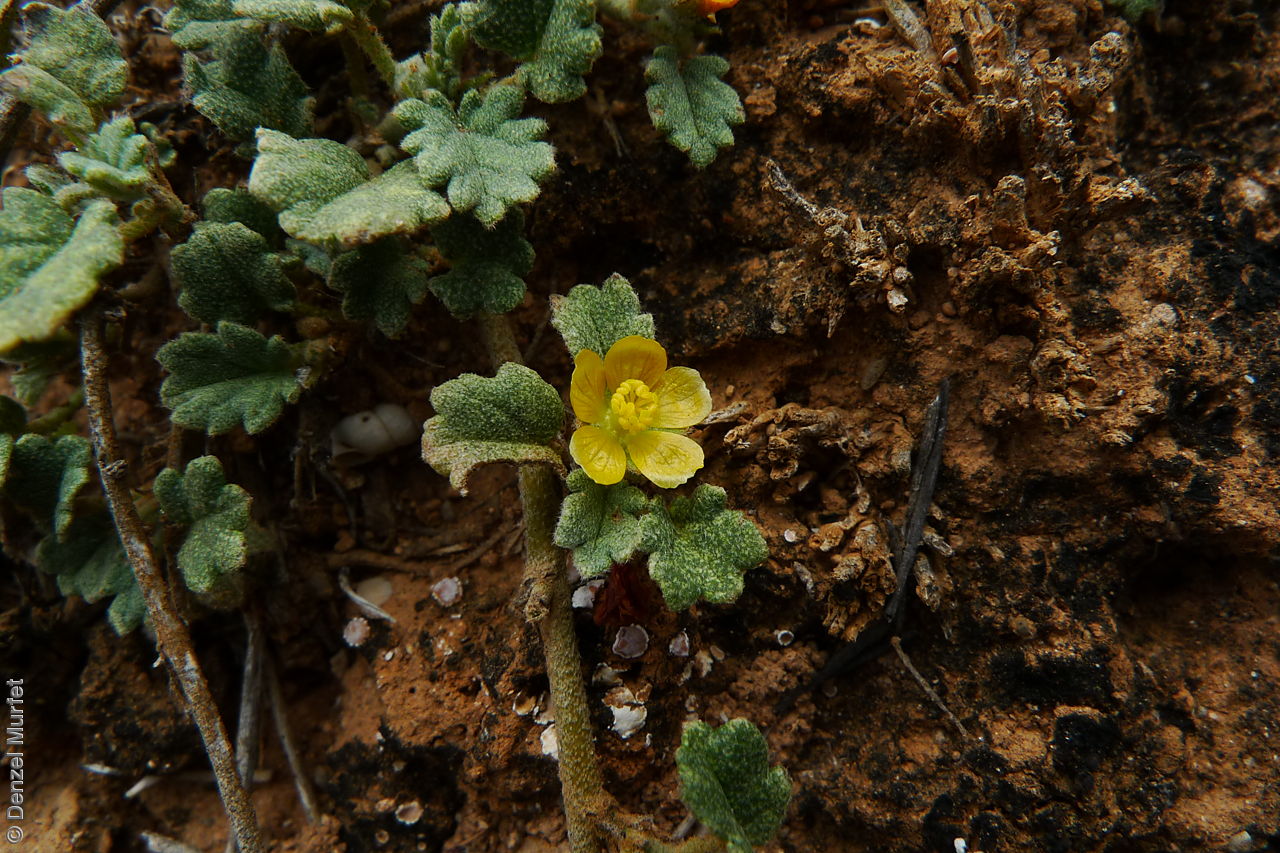
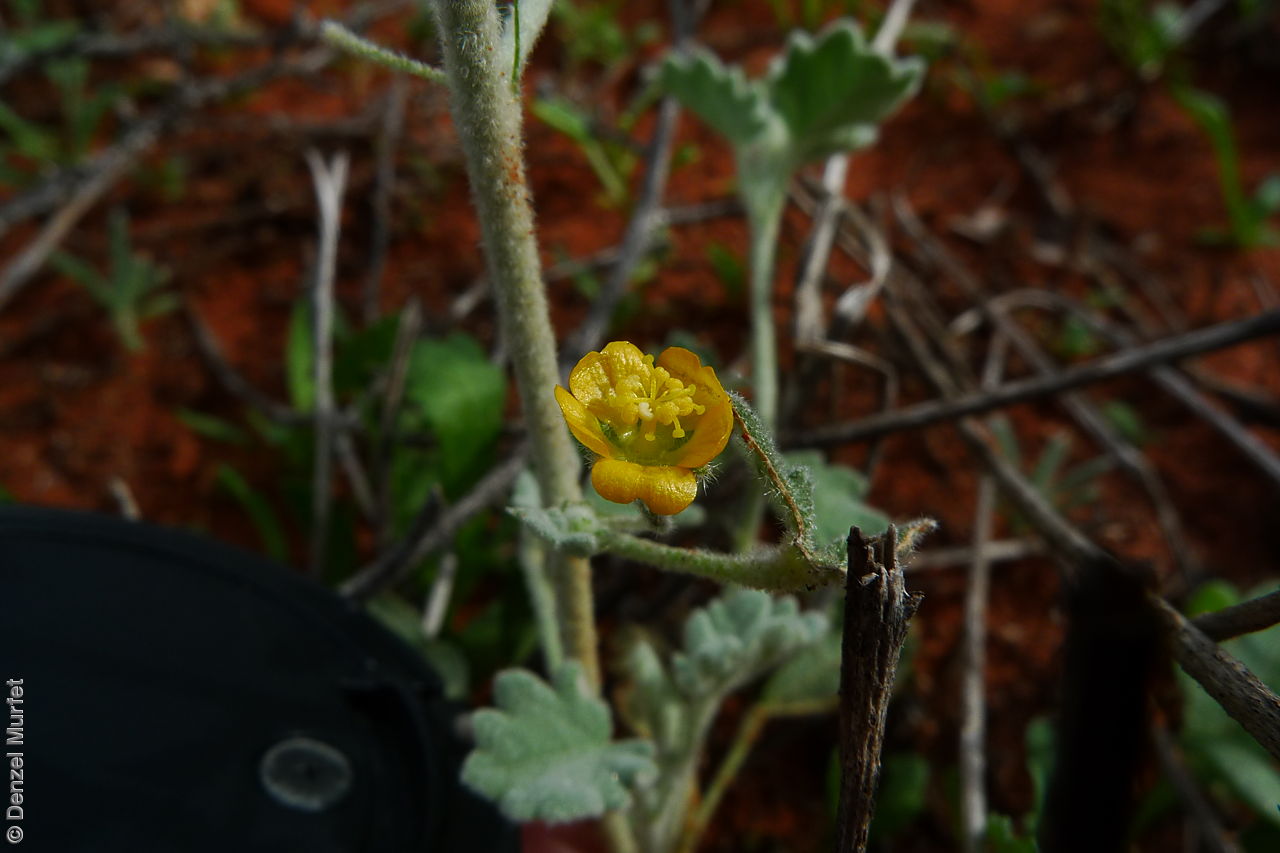
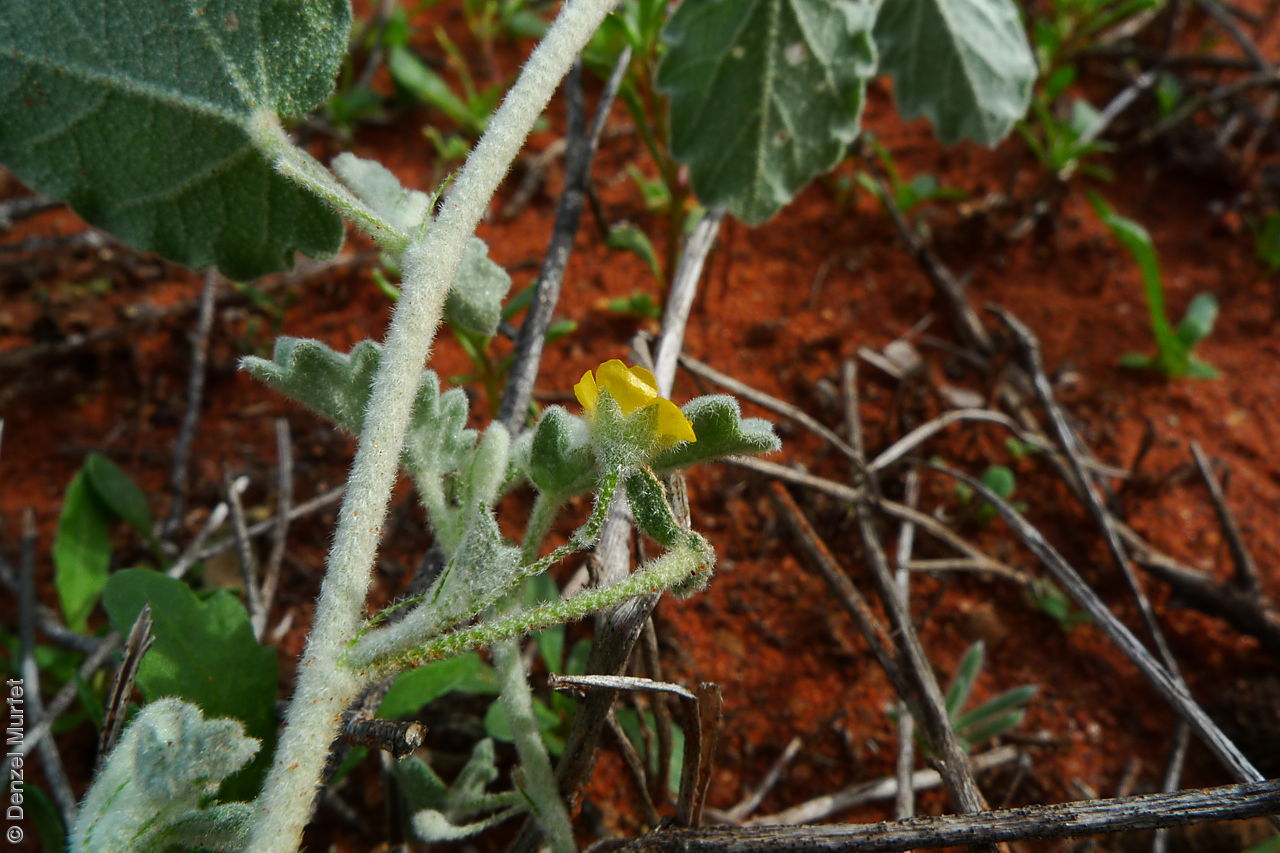
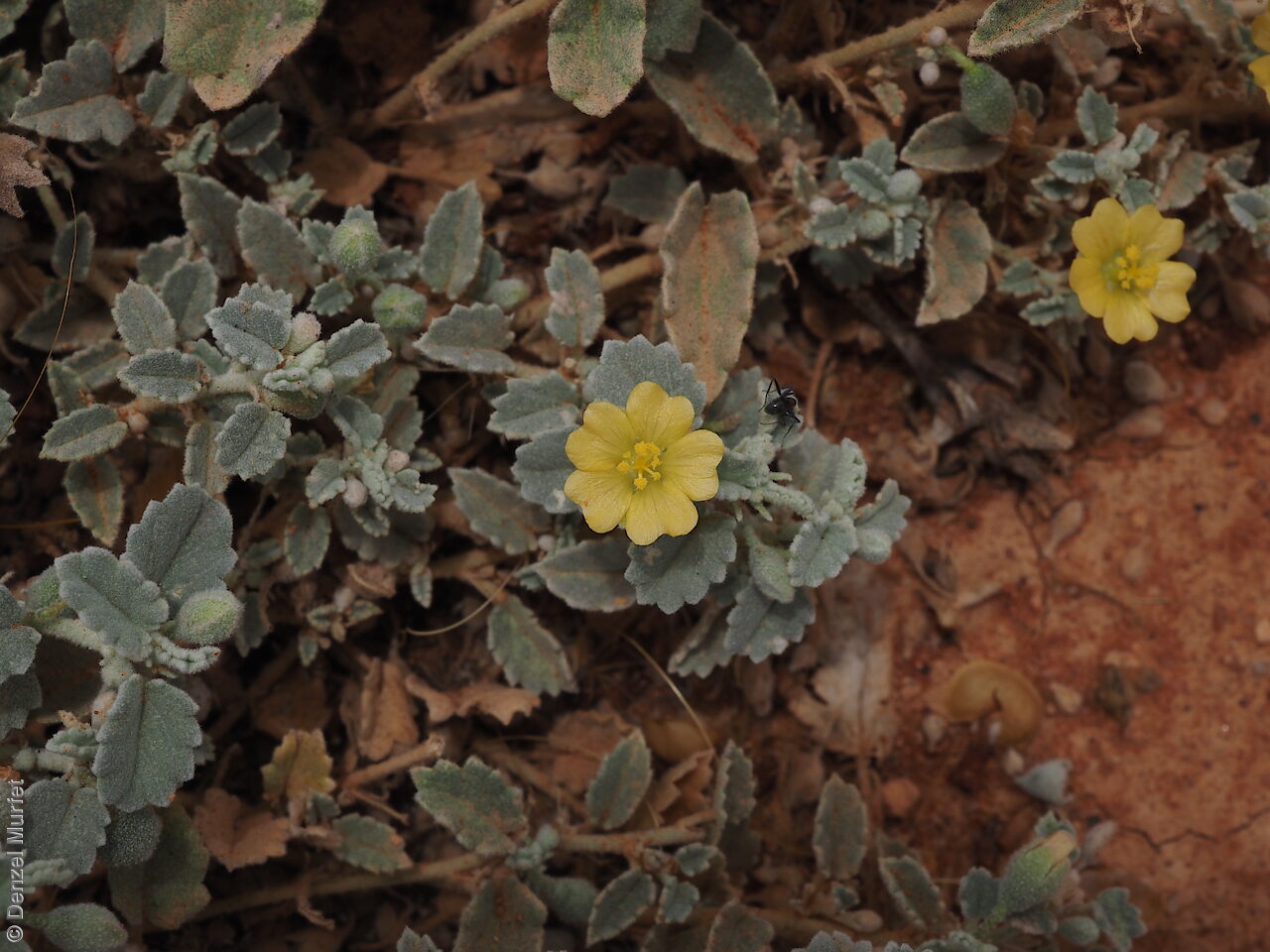
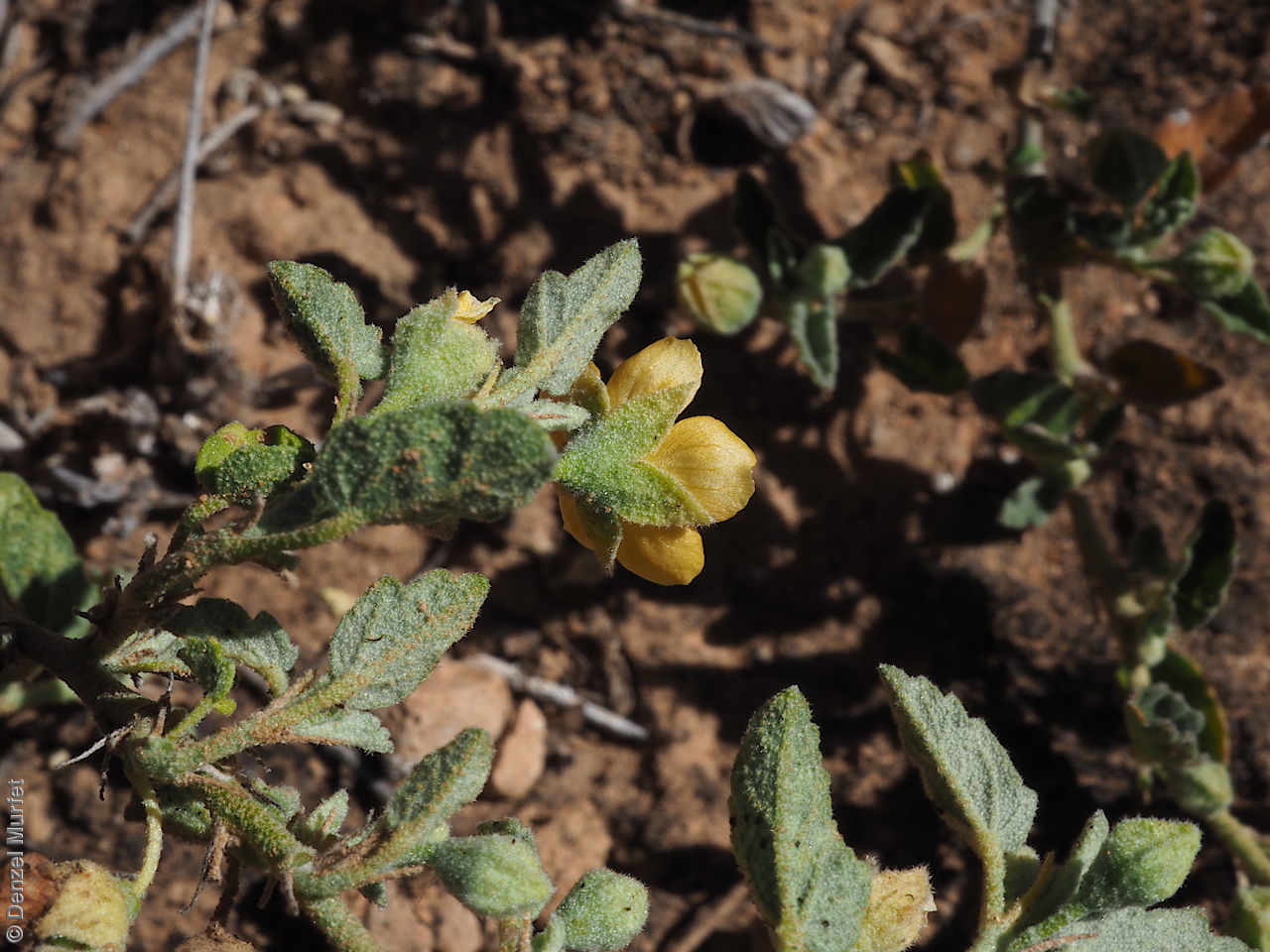
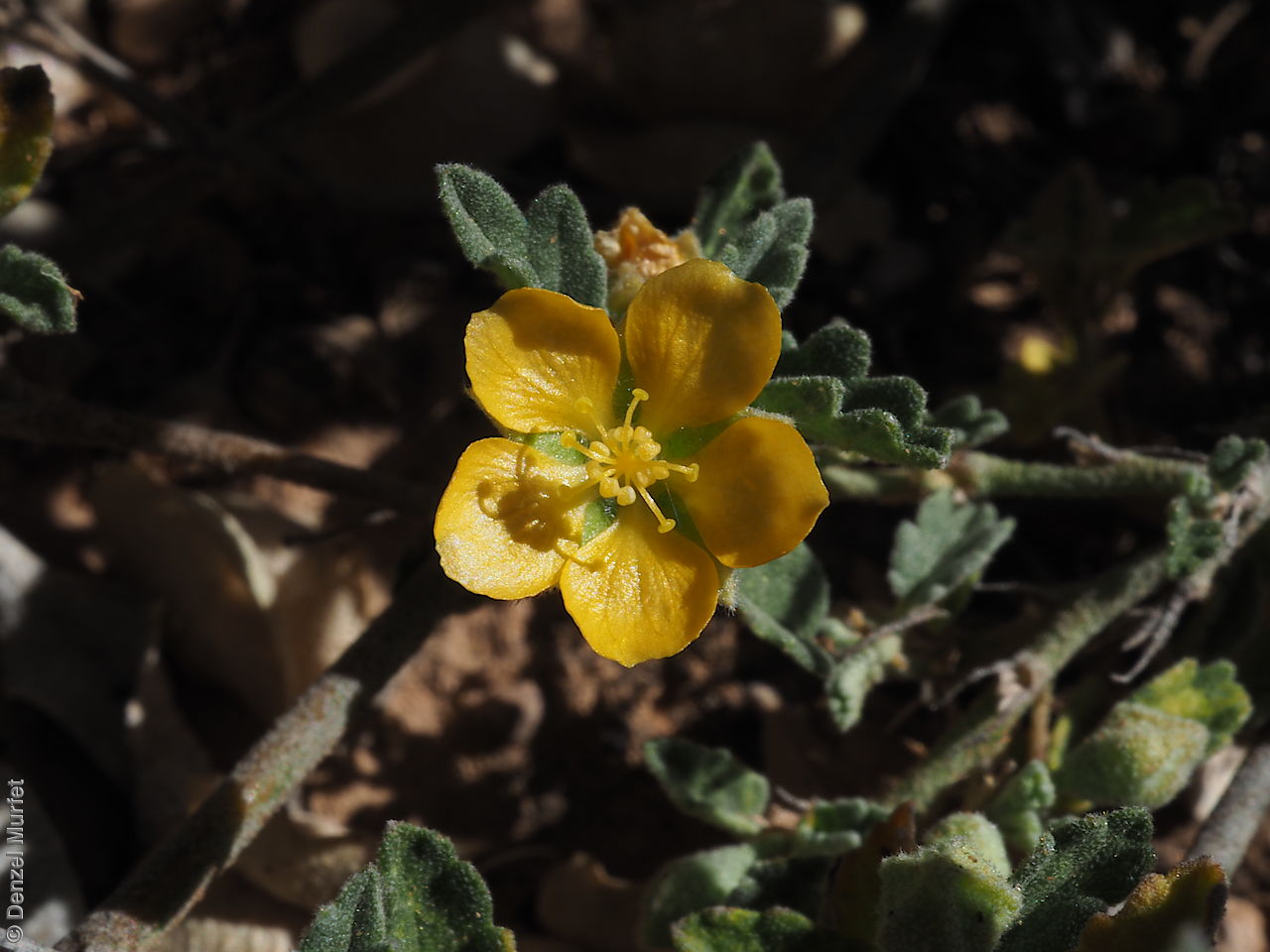
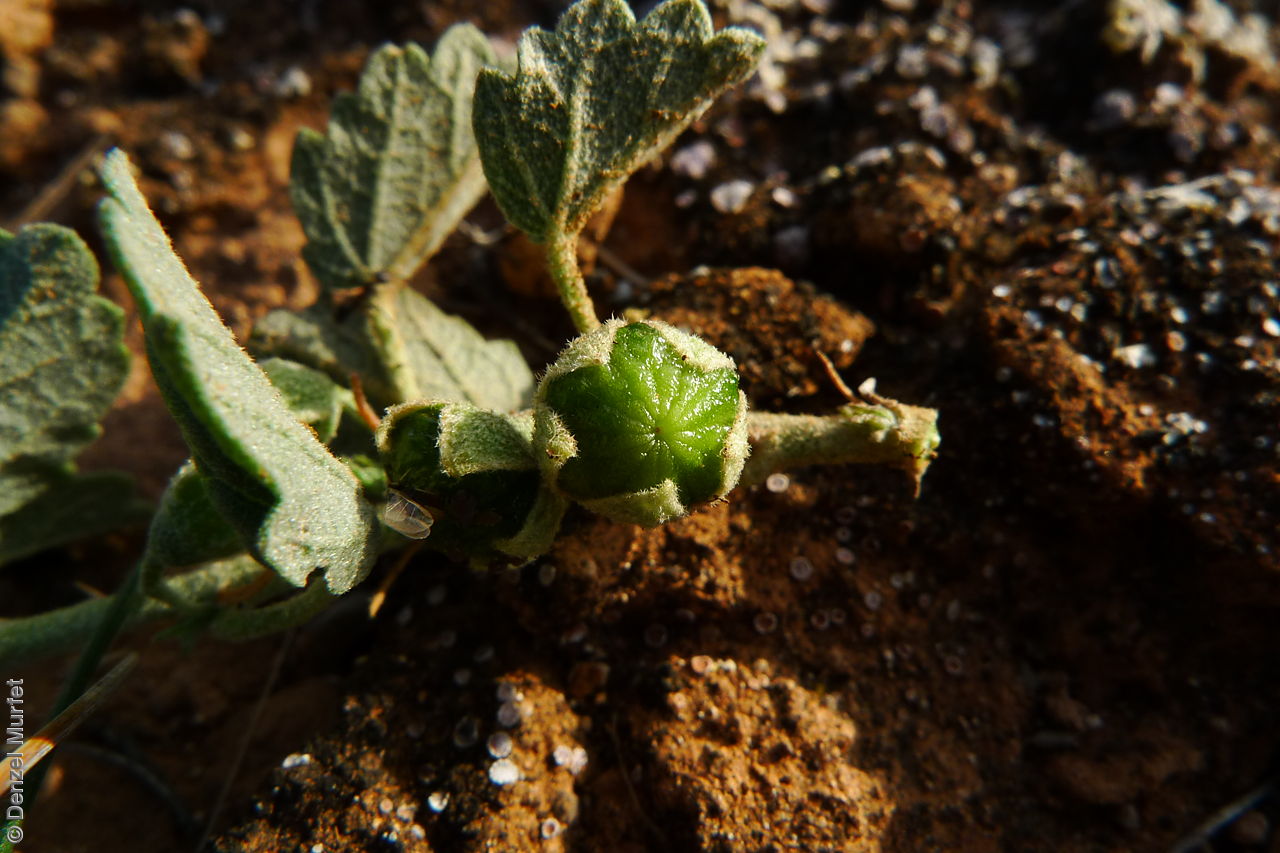
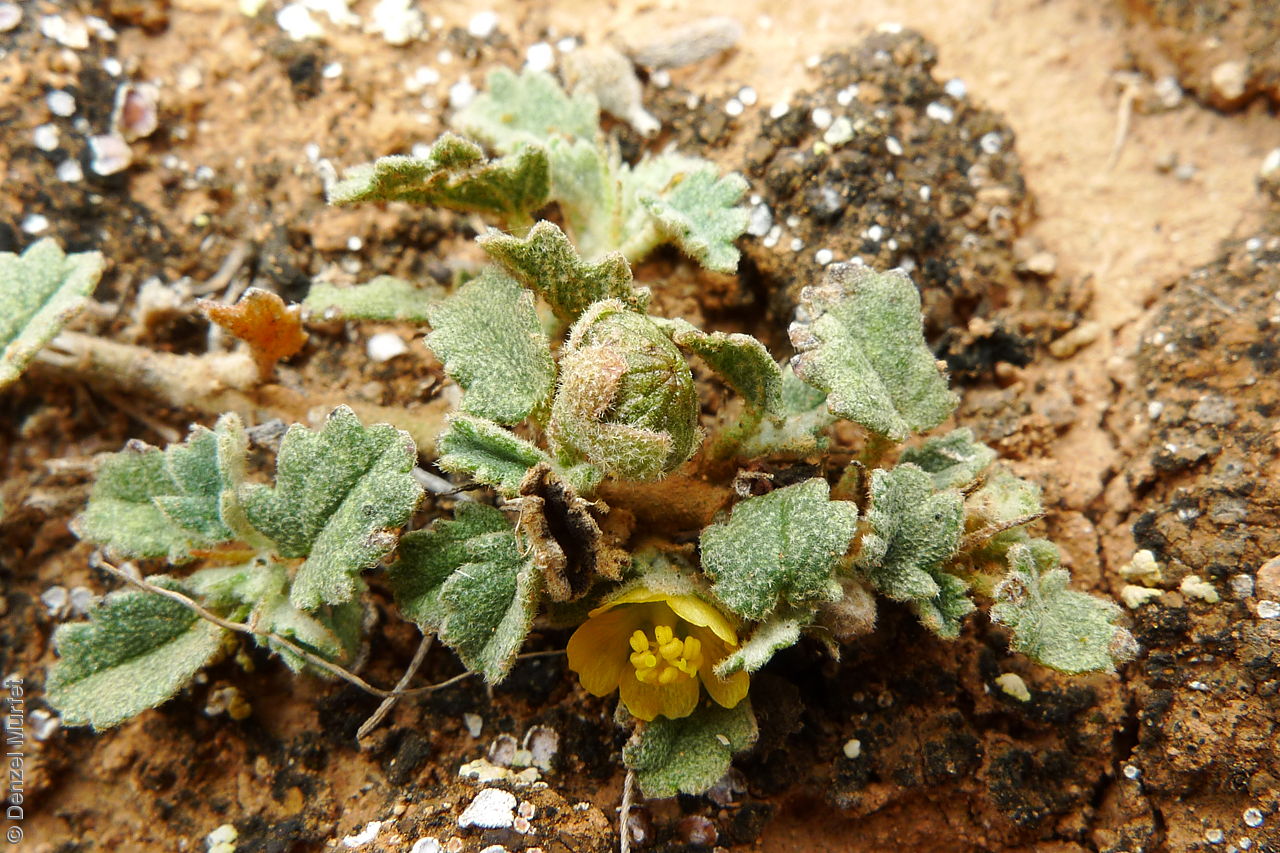
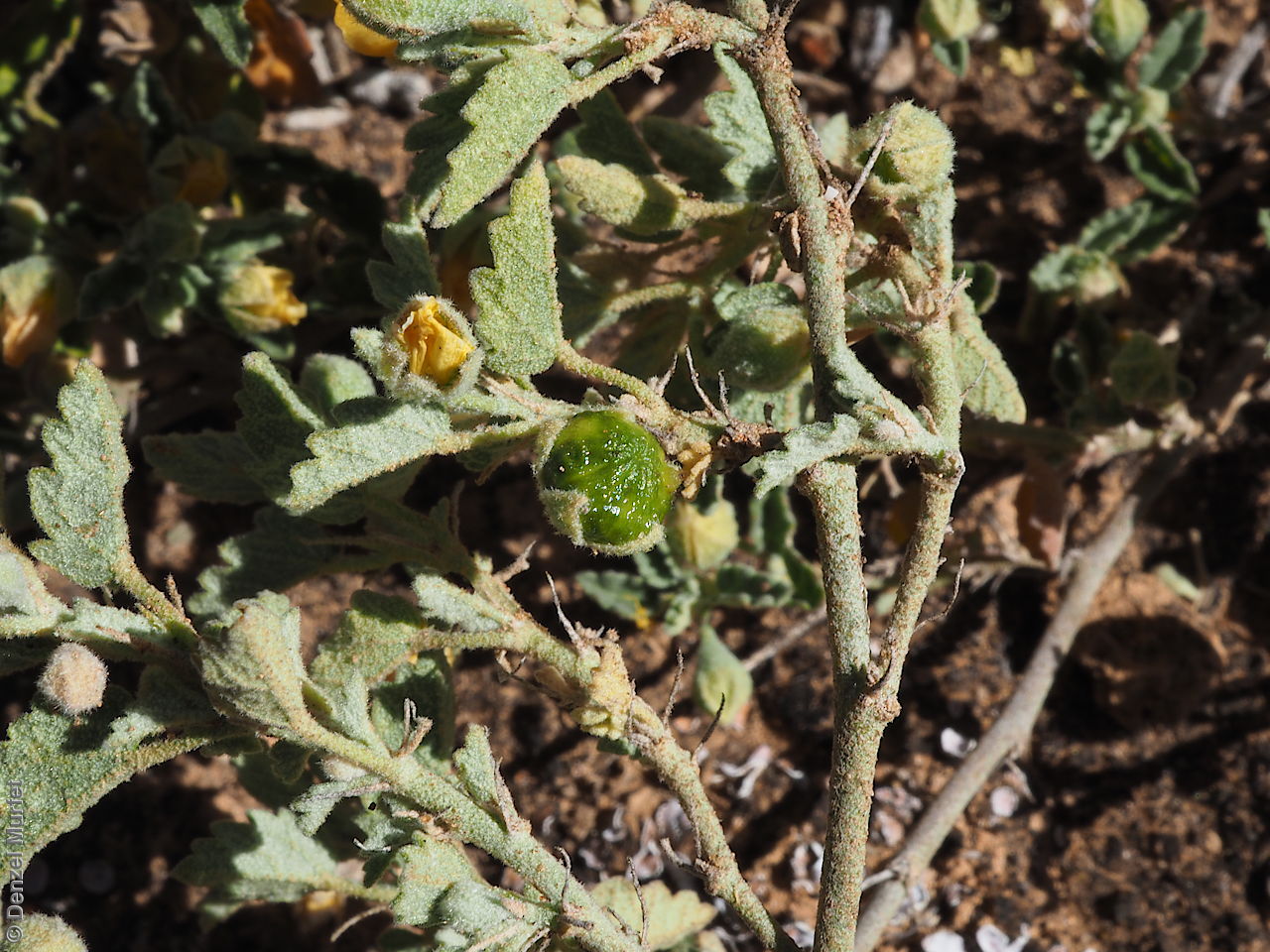

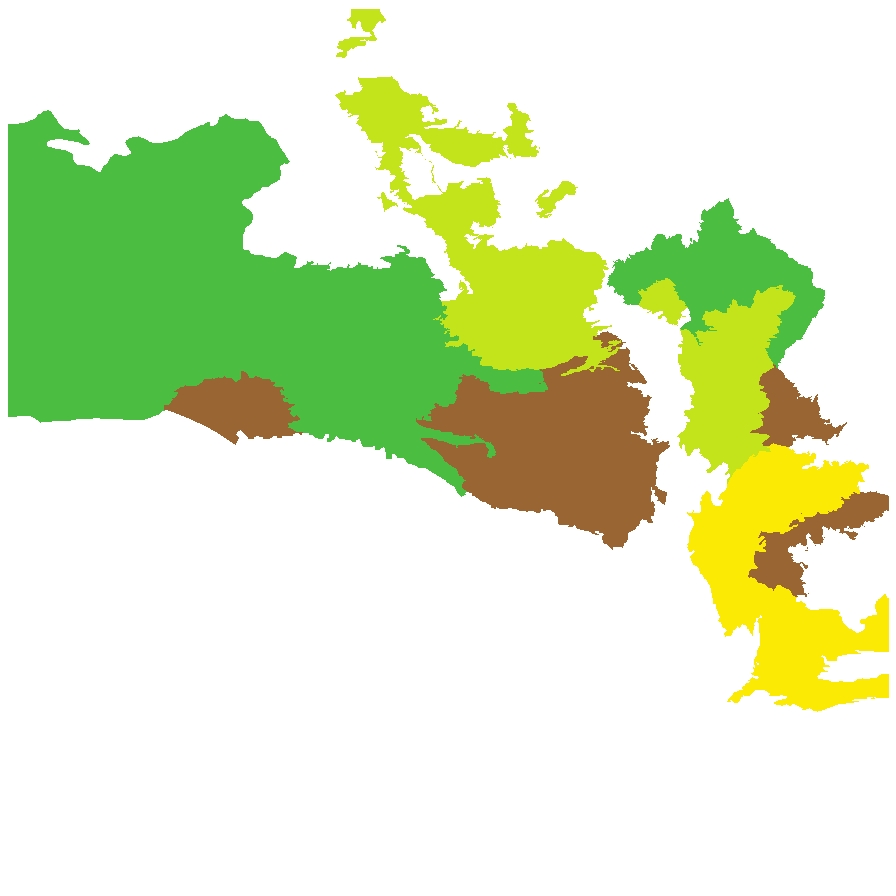
Botanical art
Prior names
Sida corrugata
Sida corrugata var. A (N.N.Donner 7573)
Etymology
Sida a Greek name used by Theophrastus for a water-lily, probably in reference to Nymphaea alba or for a pomegranate tree. Linnaeus transferred the name to Malvaceae changing its primary, pre-Linnaean application. Spodochroma from the Greek 'spodos' meaning ashes or ash-grey and 'khroma' meaning colour; referring to its
Distribution and status
Found in a central band across South Australia, growing on limestone soils. Also found in Western Australia, New South Wales and Victoria. Native. Common in South Australia. Rare in New South Wales and Victoria. Common in Western Australia.
Herbarium regions: North Western, Lake Eyre, Nullarbor, Gairdner-Torrens, Flinders Ranges, Eastern, Eyre Peninsula, Northern Lofty, Murray
NRM regions: Alinytjara Wilurara, Eyre Peninsula, Northern and Yorke, South Australian Arid Lands, South Australian Murray-Darling Basin
AVH map: SA distribution map (external link)
Plant description
Prostrate to decumbent shrub to 20 cm tall and wide with dense hairy branches. Leaves alternate, broadly oblong or broadly ovate, to 20 mm long and wide, margins deeply wrinkled, toothed, greyish above, yellowish-green below. Inflorescence solitary in leaf axils with small yellow flowers. Flowers throughout the year. Fruits are conical fruit to 5 mm diameter, hairless or sparsely pubescent, with numerous segments. Seed embryo type is folded.
Seed collection and propagation
Collect seeds between January and December. Collect mature fruits, those that are turning pale straw colour and contain dark hard seeds. Place the capsules in a tray and leave to dry for two weeks. Then rub the capsules gently with a rubber bung or by hand to dislodge the seeds. Use a sieve to separate the unwanted material. Store the seeds with a desiccant such as dried silica beads or dry rice, in an air tight container in a cool and dry place. This species has physical dormancy that needs to be overcome for the seed to germinate (e.g. nicking or softening the seed coat).
| Location | No. of seeds (weight grams) | Number of plants | Date collected | Collection number Collection location | Date stored | % Viability | Storage temperature |
|---|---|---|---|---|---|---|---|
| BGA | 1,000 (1.68 g) | 50 | 3-May-2007 | RJB70604 Flinders Ranges | 19-Sep-2008 | 30% | -18°C |
Number of plants: This is the number of plants from which the seeds were collected.
Collection location: The Herbarium of South Australia's region name.
% Viability: Percentage of filled healthy seeds determined by a cut test or x-ray.